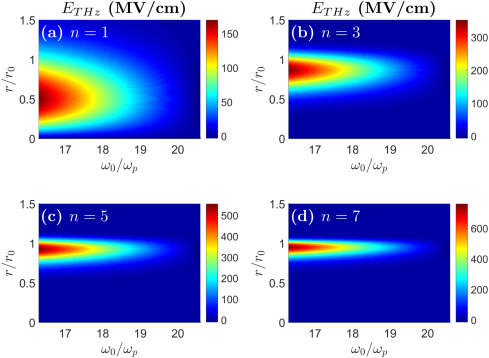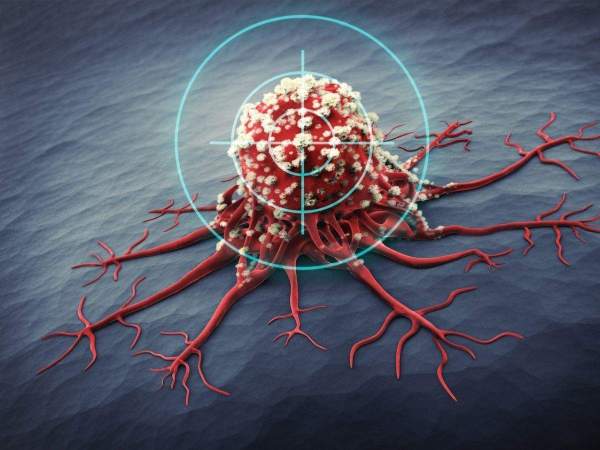
Terahertz Therapy for Cancer
Cancer still remains a significant health challenge worldwide, with millions of people diagnosed and losing their lives each year. Various types of treatments have been developed to combat cancer, including chemotherapy, radiotherapy, and surgery. However, these treatment options come with significant drawbacks, such as severe side effects, which can damage healthy cells and tissues.
Terahertz therapy is a novel approach in the field of cancer treatment that has shown positive results in recent research studies. In this blog post, we will explore what terahertz therapy is and how it works against cancer.
What is terahertz radiation?
Terahertz (THz) radiation is part of the electromagnetic spectrum that lies between infrared rays and microwaves. THz radiation has unique properties that make it suitable for a broad range of potential applications in science and technology. One such application is terahertz medical imaging.
THz radiation has low photon energy levels, meaning it does not cause ionization or create harmful free radicals like X-rays. This property makes THz radiation safe for living organisms when used at lower intensities typically required in biomedical applications.

What is terahertz therapy for cancer?
Terahertz therapy involves the use of high-frequency electromagnetic waves ranging from 0.1-10 THz to treat cancer cells. The therapy works by exposing the cancer cells to terahertz radiation at specific frequencies, which can cause them to undergo selective apoptosis. In this process, cancer cells self-destruct without harming surrounding healthy tissue.
Terahertz waves interact with water molecules in biological tissues and generate heat through a process called resonant absorption. As a result, cancerous tissue has unique water content compared to normal tissue, which allows for selective targeting of the tumour region while sparing healthy surrounding tissues.
Research on terahertz therapy
Studies have shown that terahertz radiation has significant potential as an innovative treatment option for various types of cancers, such as lung, colon, breast, and skin cancer.
One study conducted by researchers from the University of Tokyo found that high-frequency terahertz radiation effectively induced apoptosis in human breast adenocarcinoma MCF-7 cells while leaving normal human breast epithelial MCF-10A cells unharmed. Additionally, they noted no adverse effects observed after treatment. [1]
Another study published in the Journal of Biomedical Optics reported successful results of using THz therapy on melanoma skin cancer. [2] They showed that treating melanoma tumours with specific terahertz frequencies significantly reduced tumour growth rates and increased apoptotic rates in tumour cells while leaving healthy surrounding tissue unaffected.
Moreover, research has also shown that terahertz therapy can enhance the effectiveness of other cancer treatments, such as chemotherapy and radiotherapy.
A study published in the Sensors (Basel) reported that applying low-intensity THz radiation to breast cancer cells increased sensitivity to cisplatin, a widely used chemotherapy drug. [3]
Additionally, terahertz radiation has been shown to increase tumour oxygenation levels, which can improve the efficacy of radiotherapy treatment by making it easier for ionizing radiation to kill cancerous cells.

Terahertz radiation in cancer diagnosis
Skin Cancer
Terahertz imaging has demonstrated its potential in detecting the boundaries and depths of skin cancer tissues with high accuracy, which is crucial for preventing recurrence and enabling precise removal. Unlike visual or MR imaging techniques, terahertz imaging can highlight not only the distribution of cancer on the skin but also its invasion depth into the tissue.
This data assists surgeons in targeting only the malignancy region and avoiding unnecessary removal of healthy tissue. Additionally, terahertz imaging can improve diagnosis in instances such as oral and digestive cancers by identifying cancerous surfaces on internal organs. [4]
Oral Cancer
Oral cancer is a type of epithelium carcinoma similar to skin cancer that affects various organs in the mouth area. THz endoscopes have emerged as a compact and precise method for identifying malignant tissue boundaries compared to bulky MR or US imaging devices.
The research implemented the freezing technique for detecting oral tissue regions affected by cancer, which allowed THz radiation to distinguish cellular structures between normal and malignant areas despite the high water content in oral tissues. [4] As a result, this system has the potential to locate cancers deeper inside the tissue with higher accuracy and efficiency than before.
Breast Cancer
Breast tumour surgical excision is particularly critical due to the potential impacts on quality of life and consequent psychological consequences. Traditional techniques such as MR imaging and mammograms based on X-rays are uncomfortable for patients and may not necessarily provide precise information during breast-conserving surgery.
Recent studies have suggested that THz technology can effectively determine tumour boundaries, thereby reducing the need for unnecessary excisions. The researchers demonstrated the potential of Terahertz device imaging by comparing its accuracy in detecting tumour boundary size and shape with histopathologic images obtained from 22 women’s breast cancer tissue specimens.
Moreover, the researchers used a handheld THz probe system to analyse 48 resected breast cancer samples, resulting in an accuracy rate of 75-69%, sensitivity rate of 86-87%, and specificity rate of 66-54% using various methods. [4]
Challenges and future directions
Although terahertz therapy shows promise as a non-invasive and effective treatment for cancer, there are still challenges that need to be addressed before widespread adoption. One challenge is the lack of standardized protocols for dosing and frequency selection in THz-based therapies. Future studies should explore these aspects further to determine the optimal dosages necessary for safe and effective outcomes.
Another challenge is the question of bioavailability in living organisms. The use of terahertz waves requires direct access or proximity to target tissues, which limits its utility against deep-seated tumours. Further research is needed to develop techniques for delivering terahertz waves regionally within organs or tissues beyond skin depth limitations.
Conclusion
Terahertz therapy represents an innovative approach to cancer treatment with significant potential to safely and effectively target cancerous tissues. With further research and development, THz technology could be a game-changer in the field of cancer therapy, potentially leading to improved patient outcomes with fewer side effects than current treatments. One such example is the Terahertz wand.
References
- https://www.ncbi.nlm.nih.gov/pmc/articles/PMC7690245/
- https://www.spiedigitallibrary.org/journals/Terahertz-radiation-and-the-skin-a-review/volume-26/issue-04/043005/Terahertz-radiation-and-the-skin-a-review/10.1117/1.JBO.26.4.043005.full
- https://www.ncbi.nlm.nih.gov/pmc/articles/PMC8512288/
- https://pubs.aip.org/aip/jap/article/125/19/190901/155981/Potential-clinical-applications-of-terahertz
